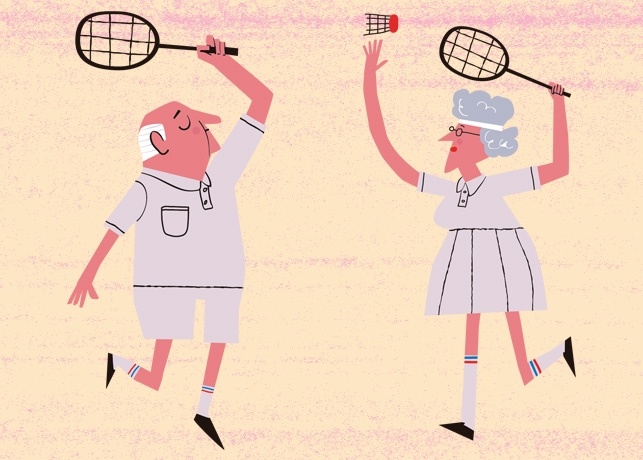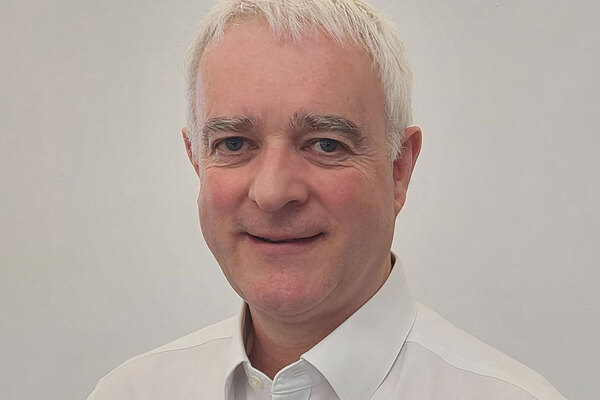You are viewing 1 of your 1 free articles
Sailing into retirement
The biggest pension fund in the sector is about to announce its deficit has grown even bigger. Peter Apps reports on the consequences for housing associations and staff

Source: Mikel Casal
‘It’s all doom and gloom, frankly,’ says Jonathan Pryor, a partner at accountancy firm Smith and Williamson.
Mr Pryor is reflecting on the forecast for the Social Housing Pension Scheme (SHPS) – the 108,000-member, £2.3bn pension fund for the social housing sector – and his dour view is reflected by many finance directors, chief executives and staff across the sector.
Why? The fund is preparing to make an official announcement on the valuation of its deficit (the gap between its assets and liabilities) and it has already warned social landlords to expect bad news. In November, it suggested the gap has grown by about 40% from the £1bn when it was last officially calculated in 2011.
This would potentially mean higher contributions for members and more staff shifted away from generous defined benefit pension schemes that offer a guaranteed payment at retirement, based on final salaries, to defined contribution schemes that specify an amount to pay in, and may result in a lower final payment.
So what is the future for SHPS? How have we reached this position? And what should social landlords be doing to steady the ship?
‘I’m not expecting good news, because it never does seem to be good news when it comes to pensions,’ says Nick Atkin, chief executive of 6,400-home Halton Housing Trust, which has 83 members of SHPS among its staff.
The scheme takes a snapshot of its deficit every three years, and uses this to agree a payment plan with members to reduce it. The snapshot was taken on 1 October last year, and the outlook - be it good or bad - will be announced soon.

Source: Mikel Casal
The sector is braced for it to be bad news. At a series of conferences for members of the scheme in November, SHPS suggested the deficit had risen to around £1.4bn, despite taking almost £200m in contributions over the past three years from members to reduce the £1bn deficit identified at the last check-in.
“It is surprising, given the way the stock market has gone, why the performance of the pensions investments is doing so badly.”
Nick Atkin, chief executive, Halton Housing Trust
The deficit related to the defined benefit section of SHPS – the projected amount it owes to members (its liabilities) against the projected returns on its investments (its assets).
‘[The deficit] is the unintended consequences of good intentions,’ says Tim Sharples, an actuary at Lane Clark & Peacock.
‘Interest rates have fallen drastically over the past 20 or 30 years, and people are living longer then they did when the scheme was set up.’
A key reason for the deficit is the return on government bonds (gilts), which were at a 200-year low when the deficit was calculated, and have fallen even lower since.
SHPS invests in gilts, and they are also relevant for working out its liabilities - meaning the unprecedented low returns increases the deficit.
But the size of deficit has caused some dark mutterings in the sector.
‘It is surprising, given the way the stock market has gone, why the performance of the pensions investments is doing so badly,’ says Mr Atkin.
‘The housing sector has to pick up the tab for the quality of investments that are made by SHPS - it’s like no other world you work in, where you pay for somebody else’s decisions.’

Source: Mikel Casal
Ken Youngman, finance director at Family Mosaic, adds: ‘Is it poor investment decisions on their part or because gilt rates have come down? There are two views on that, but we are just stuck with whatever they say.’
Since the calculation in September, the deficit is believed to have increased even further as gilt rates have continued to tumble – dropping down to £1.8bn in January, according to an estimate by KPMG. While this will not become materially relevant until the next valuation in 2017, it does increase the urgency to take action.
“If this is just cost-cutting there is going to be a row – and that could mean industrial action. People will go out on strike to protect their pensions.”
John Gray, Unison’s National Executive Council member for housing associations
The Pensions Trust, which manages SHPS, declined requests for an interview, or to provide answers to our questions.
The estimate it gave in November is likely to be fairly close to the figure announced officially.
‘Our expectation is that the headline figures that were talked about then will remain the same,’ says Mr Sharples.
‘On that basis, we are expecting housing association contributions to increase by more than they increased at the last valuation. It’s roughly going to be a 110% of the increase in contributions they faced last time.
‘That can be quite a large number and it will concentrate housing association minds.’
Minds will be further concentrated by the fact that changing accountancy rules introduced by the Financial Conduct Authority will mean that the £1.4bn deficit will be reflected on housing association balance sheets in March 2016 financial statements, when the new contributions come into effect. Currently, associations just account for their annual payment in the year it is payable.
‘There is nothing housing associations can do to avoid the accounting effects. The changes will create volatility in accounts, which will change every three years when there is a valuation,’ says Mr Pryor.

Source: Mikel Casal
So what can be done? Housing associations essentially have two decisions to make. Are they going to keep staff in defined benefit schemes? And, more drastically, are they going to stay on board with SHPS at all?
The SHPS deficit is relevant to its defined benefit schemes – sometimes referred to as final salary schemes – which promise to pay a certain income on retirement. Switching to defined contribution schemes, which just specify an amount to pay in, means limiting exposure to the deficit and contribution increases. Despite this, according to exclusive research by accountancy firm Baker Tilly, 57% of landlords plan to make no changes to their scheme. Of those that do, 71% want to close defined benefit schemes.
‘It appears that many providers are simply accepting the higher and increasing costs associated with their pension schemes,’ says Peter Howard, audit partner at Baker Tilly.
‘Lots of people were thinking [about moving to defined contributions] last time and didn’t do it, but this time many more might bite the bullet,’ adds Mr Sharples.
In numbers: The SHPS deficit
62,000 active members across 700 member organisations. There are also 31,000 deferred members and 15,000 pensioners.
£1.4bn The estimate of the deficit given at employer consultations in November. This is a rise from the £1bn calculated in 2011.
£200m paid by members over three years in a bid to reduce the deficit.
10% increase in contributions estimated by pensions firm Lane Clark & Peacock once the next valuation takes effect from April 2016.
After the last deficit calculation, SHPS wrote to 83 employers urging them to take this action, and Mr Youngman says a paper has gone to the Family Mosaic board to do just this for the employees it has in defined benefit schemes. Landlords, as long as they are careful legally, can switch employees currently on defined benefit schemes to defined contributions. While it limits future risk of rising deficit contributions, it is a move that could play badly with employees.
John Gray, Unison’s National Executive Council member for housing associations, thinks there is a danger that employers overplay the impact of the deficit. He says: ‘If employers have got genuine reasons, we are more than prepared to sit with them and listen. However, if this is just cost-cutting there is going to be a row – and that could mean industrial action. People will go out on strike to protect their pensions. They are going to have a lot of 80-year-olds who will be too poor to retire, or they will retire and die in poverty. It’s as stark as that.’
Mr Gray says the deficit is ‘not a real number’, as it is calculated based on historic low gilts which, he says, are likely to normalise eventually, making the scheme’s investments more capable of meeting its liabilities.
‘The message should be “don’t panic”. The numbers may be scary, but this is not real money,’ he says.

Source: Mikel Casal
But housing associations feel they have to be pragmatic. ‘Defined benefit is a significant benefit to employees and of benefit to the sector, but the costs and risks associated with offering those schemes can be high, and providers will make their decision in terms of these risks,’ says John Butler, policy officer at the National Housing Federation (NHF). . These decisions are currently being carefully considered by finance directors and boards across the sector.
‘We are going to have to look at the scale of what the increases are and then take a view about how to meet the shortfall,’ says Mr Atkin. ‘We will have a conversation with employees, and may be able to make some of it up in the ongoing efficiencies we are trying to find.’
It might be that organisations take the more nuclear option of leaving SHPS altogether.
Radian was the first association to do this. After some six years of negotiations, the landlord agreed to take on £15m of the deficit, which had eventually been calculated as its share, and set up its own scheme with the Pensions Trust in January 2013 – which also manages SHPS.
‘We didn’t like not being able to influence the direction it was going in terms of funding [such as investment decisions],’ says Andrew Newberry, director of finance at Radian.
‘There was a cost to developing much of the framework, which allowed us to leave, and a lot of time spent negotiating with SHPS. But it’s certainly been worthwhile. We’ve got the savings, we’ve got more control, we know what liabilities are going to be on our own balance sheet and will avoid the volatility in costs that SHPS employers are likely to experience under [new accountancy rules],’ says Mr Newberry.
“If, say, another 20 of the stronger employers were also to look to leave, that could start to lead to a material detriment”
Tim Sharples, an actuary at Lane Clark & Peacock
He adds that the work Radian has done in leaving could inspire others to follow suit. It did not open the defined benefits scheme to new members, but its members with defined benefit schemes at the point of transfer continued to receive them. He estimates that the 21,000-home landlord has saved almost £500,000 as a result of leaving SHPS.
‘They can have a more direct conversation about [investments] with the pensions trust. And if they have a good year and want to put money in to reduce the deficit, they can do that and not be just providing a charitable contribution to everyone else,’ says Mr Sharples.
Sanctuary – the UK’s largest social landlord with 95,000 homes – also recently announced it is considering its options with respect to the scheme. The landlord, which currently has 51 staff members in SHPS, is one of several large players rumoured to be mulling a move away from SHPS, and confirmed to Inside Housing that a review is under way, although it stressed that it has reached no firm conclusions yet.
‘The transfer shouldn’t have a significant direct impact on the other employers. However, Sanctuary is one of the largest and stronger employers in the scheme and if, say, another 20 of the stronger employers were also to look to leave, that could start to lead to a material detriment to the strength of the remaining employer covenant, and so to the security of members’ benefits,’ says Mr Sharples.
The Scottish Housing Association Pension Scheme (SHAPS), SHPS’ sister scheme north of the border, has faced similar issues. In September 2012, the deficit stood at £304m, with the next triennial valuation this year. With fewer, smaller employers the contributions are a bigger burden. Gordon Campbell, director of consultancy Campbell Thompson Associates, says they account for 2% of Scottish housing associations’ overall turnover, rising to 5% at some landlords.
Many other housing associations have staff in local government pension schemes as a result of stock transfers. Many of these funds are experiencing similar issues to SHPS, as a result of the same combinations of factors.
Despite this, some landlords are simply too small for the deficit to be a serious concern, while others have a limited exposure, having simply picked up staff from other organisations more heavily involved in the scheme.
But for others, the SHPS contributions could be a real financial worry, and they have some serious decisions to make over the coming months about what to do.
‘Nearly everything you can think of doing has a plus and minus attached to it,’ says Mr Pryor. ‘But reviewing the position is something every single landlord would be advised to do.’












